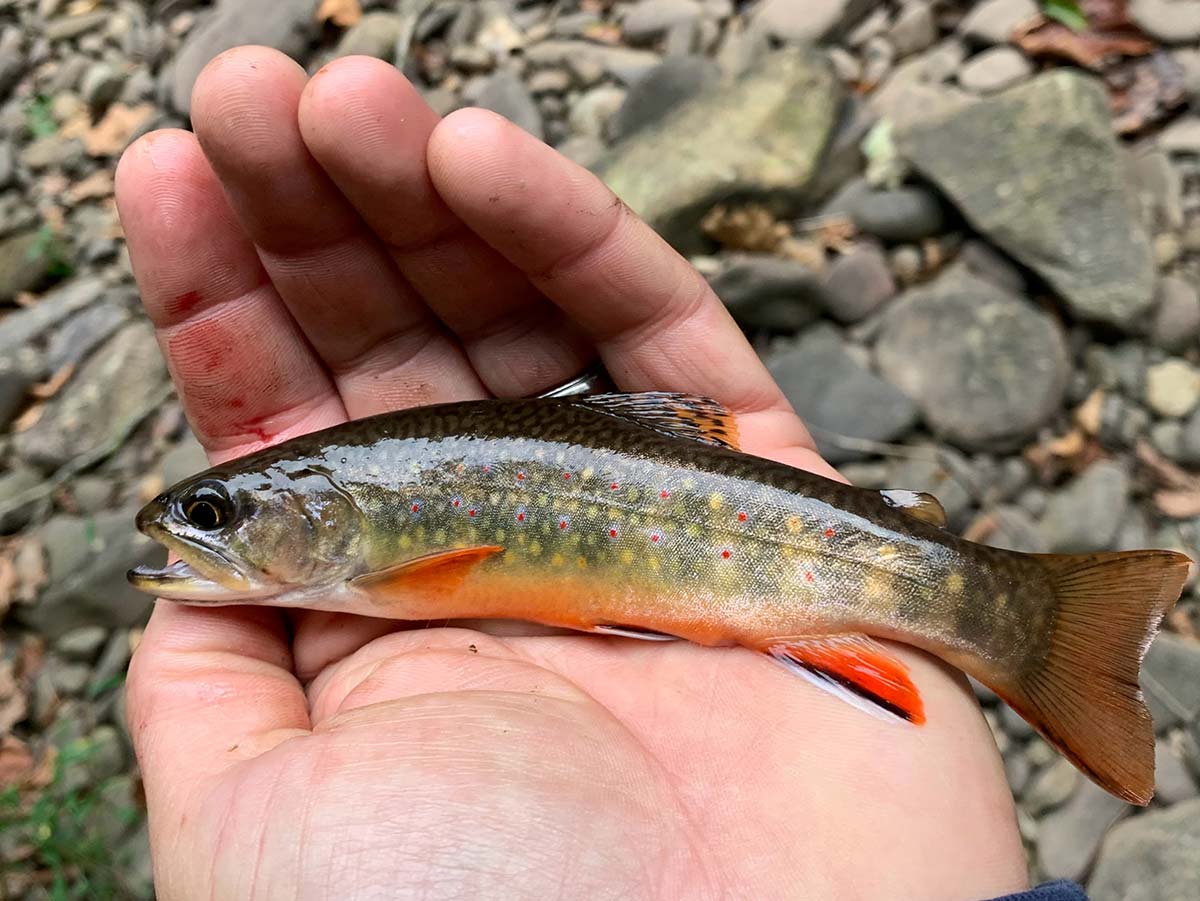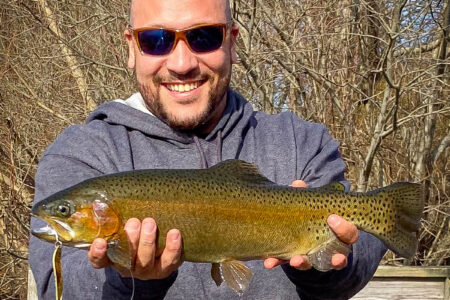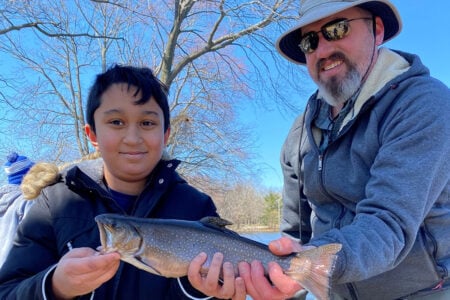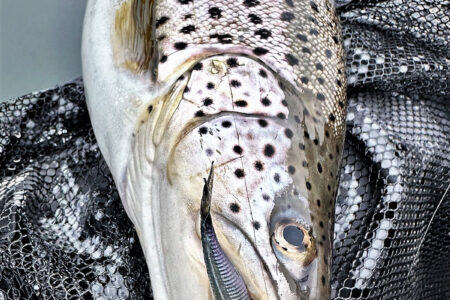
Get away from the crowds in the quest for small, natural trophies.
Brook trout are the Northeast’s favorite native fish, “native” meaning that this species has resided and reproduced in many streams and lakes for thousands of years and were not in some way introduced like other fish species. As experts are quick to point out, brook trout are actually part of the char family opposed to the other species of trout within The Fisherman readership.
Brook trout hold a special place in the heart of true trout enthusiasts. They average 4 to 8 inches in length, while trophies within small stream ecosystems could be considered anything over 12 inches. However, most anglers don’t fish for brook trout in order to land a fish of substantial size; instead, they do so because they are beautiful, natural inhabitants in a changing world where unspoiled environments are slowly encroached upon by human influence. The locations they are caught are usually mesmerizing to the senses.
There are waters that brook trout struggle to maintain the foothold. Places like the Shenandoah National Forest literally order anglers to euthanize historically invasive brown trout on select streams where brookies were once the only species. Signs are posted and pamphlets accessed at entry points to the park. This is because wild brown trout can slowly push out the natives through competition for forage and the best holding spots. Eventually the browns eliminate the brookies from the very streams and brooks that they were once the sole proprietors.
Perhaps the most enjoyable place to catch brook trout is within the narrow mountain streams and creeks that still maintain flourishing populations. Sometimes creeks only a few feet wide have tiny brook trout swimming within. Hilly and mountainous elevation are the most common places to find brook trout due to the clean, clear, colder waters required for survival 12 months of the year (they need water roughly 67 degrees and below). Heavy foliage that casts ample shade is a common attribute of brook trout streams along with hiding habitat such as fallen timber, boulders and undercut banks. The Appalachian chain and nearby foothills and valleys maintain brook trout from the chilly north all the way to Georgia.
Fly anglers prefer a variety of presentations to entice brook trout since their main forage is composed of flies and terrestrial insects. Spin fishermen can find fish using spinners and small plastic lures such as Trout Magnets. Many brook trout streams are considered “Class A” and have hook and bait restrictions so it’s important for anglers to familiarize themselves. The use of trebles is prohibited and barbs bent back is often required, for example.
When fishing a popular flow that pushes deep into the woods and over terrain, an angler can never be sure if someone fished ahead of you. In the event the main pockets and pools do not produce, anglers may suspect a fisherman may have trekked the waters in recent hours. After spooky brook trout see a person or some actual casts, it can take a few hours or even a whole day for them to commit to biting again. In this case, anglers can try fishing tough-to-access spots that require getting stuck with thorns and poked with branches. Sounds fun? Not so much, but the majority of hiking or wading fishermen will skip difficult perches.
Dangling a fly or lure in a tiny in an overlooked pocket can produce a longer-than-expected fish that darts out from cover. Plunge pools can really pile up numbers of brook trout. Casting closest whitewater often leads to fish on the best size since they compete for the best feeding stations. These fishing holes are popular for anglers, swimmers and dog walkers so get there early! Large, natural and glacial lakes that are more prevalent in the brook trout’s northern range are home to some of the largest specimens. Here, fish get talked about more in pounds than inches. Tactics move from wading and bank fishing to boats and powerless vessels that require rowing. Presentations include lures and live baits sent to different segments of the water column.
Brook trout, although native to the eastern United States, have been introduced to other elevated parts of the country where natural reproduction has occurred and allowed the species to take hold. Native brook trout streams and lakes are listed within each state’s Fish and Wildlife publication so a little reading can guide anglers to worthy waters. In addition, there are many unnamed or unnoticed tributaries, creeks and trickles that have these cherished species.
The brook trout is the state fish of nine U.S. states including New Jersey, New Hampshire, New York Pennsylvania, Vermont, Virginia, West Virginia, North Carolina and Michigan.




